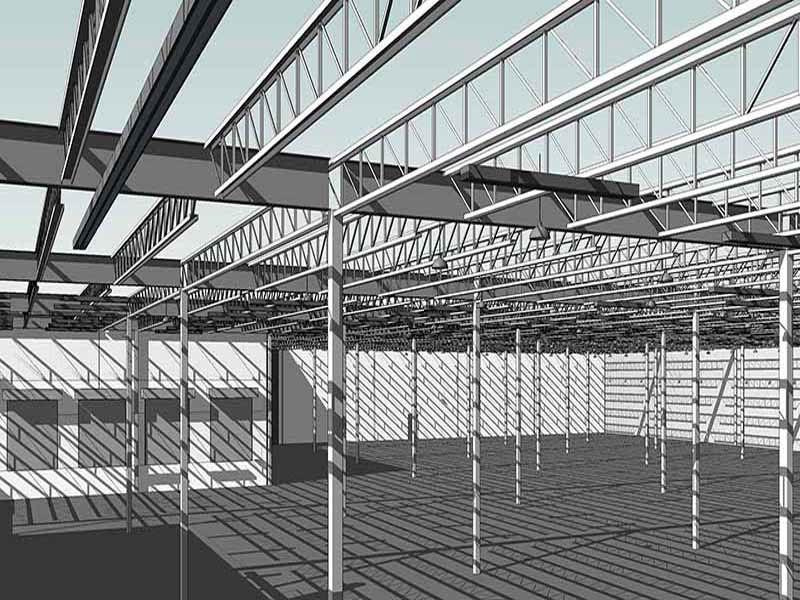How Steel Fabrication Detailing Reduces Construction Errors and Delays?

Steel fabrication detailing is a very important task during construction with regard to the quality, safety, and timely delivery of the building projects. Supposing there comes to be any element that prevents fabrication or even assembly, such a temporary delay will impose tremendous losses in terms of expenses for materials. It will not contradict the general process of structure drafting. Steel fabrication detailing serves as a bridge that goes from design to build through detailed drawings, specifications, and the conversant instructions.
It will be seen that each steel member is perfectly fitted according to the full structural plan. There arises higher coordination among architects, engineers, and contractors, reducing the misunderstandings and confusions that would have transpired on-site. It secures the time and money of a project while providing safe, reliable, and quality construction.
In this blog, we will explore the impact of effective steel fabrication detailing on reducing construction errors, minimizing delays, and ensuring smoother project delivery.
Overview of Steel Fabrication Detailing
Detailing of the steel fabrication is the act of making complete sets of drawings and documentation, and the exact description of each steel item in the construction shall be specified. These would involve dimensions, cutting details, points of connection, bolt locations, weldments, and specifications of the materials. As the detailers use expert software and engineering knowledge, they are converting architects' and engineers' designs into instructions understandable by fabricators and contractors.
Steel fabrication detailing is necessary to ensure that with complete and precise information, every beam, column, and brace fits perfectly. It leaves a minimal chance for miscommunication, fabrication and assembly errors. Good detailing also interfaces with other disciplines, such as mechanical, electrical, and plumbing systems to ensure that the whole construction process is smooth.
Common Construction Errors and Delays
Before exploring how detailing prevents issues, it is important to understand the types of errors and delays commonly encountered in construction:
● Misalignment of Structural Components
If the beams or columns are improperly placed, the building would lack structural strength. The very reworking of any corrections made would become a very costly aspect. In lesser cases, slight misalignments would cascade down a structure, more changes would have to be made, and delays would be created.
● Dimensional Errors or Missing Components
Even small errors in measurements or a lack of steel elements can bring work to a standstill on-site and cause project timelines to be affected. These kinds of errors may need re-fabrication, leading to extra cost and time for the project.
● Poor Coordination Among Teams
Incompetent communication among architects, engineers, and fabricators can create errors that result in delays or cause a structural mismatch. Coordination errors can translate into more on-site fixes, diminishing overall productivity.
● Waste of Materials and Rework
The fabrication process normally brings losses to steel materials, extra charges in labor, and longer schedules for projects. Material loss also stands for increased cost and damages the sustainability of the project.
How Detailing Avoids Errors?
Correct steel fabrication detailing immediately eliminates errors on building projects. Here's how:
1. Correct Fabrication Instructions
Accurate drawings call out precise dimensions, cut levels, and connections for each steel member. This allows members to fit perfectly the first time, eliminating on-site adjustments that cost millions.
2. Clash Detection
Accurate detailing, following established steel detailing standards, reveals clashes with other structural members or building systems prior to fabrication. Solving conflicts up front eliminates difficult and time-consuming rework at assembly.
3. Clear Communication
The whole planning exercise imparts a common vision to the architect, engineer, and contractor. These plans minimize opportunities for misunderstandings, keep everyone on the same page, and allow an easy flow of the processes at the site.
How Detailing Reduces Delays?
Besides avoiding mistakes, steel fabrication detailing simplifies construction timelines and decreases delays:
1. Streamlined Workflow
Precise plans give a definite stepwise guide from design to fabrication to assembly. Project schedules are sped up by teams working without delays.
2. Effective Coordination
Detailing is an interface for communication among engineers, fabricators, and on-site staff. This guarantees that jobs are being done in the right order so that on-site bottlenecks are eliminated.
3. Quicker Resolution of Problems
Potential issues are discovered in the detailing stage and not on-site. Sought-after issues early save downtime and avoid cascading delays throughout the project.
4. Timelines by the Numbers
Projects are on schedule because of hardly any faults, rework, and discrepancies. Any realistic schedule would assist the contractor in effectively scheduling labor, deliveries, and inspections that will happen with the structural steel fabrication and erection.
Wrapping It Up
Steel fabrication detailing is beyond a mere technical procedure; it is an essential strategic tool ensuring construction is executed adequately, efficiently, and on time. Through exact specifications, clash identification, and better coordination among teams, detailing helps in avoiding wasteful errors and reducing delays. For developers, contractors, and engineers, an investment in professional steel fabrication detailing is an investment in safety, quality, and productivity. Through careful steel fabrication specification, not only do the projects fulfil design requirements, but also client satisfaction and ultimate structural performance are enhanced.







